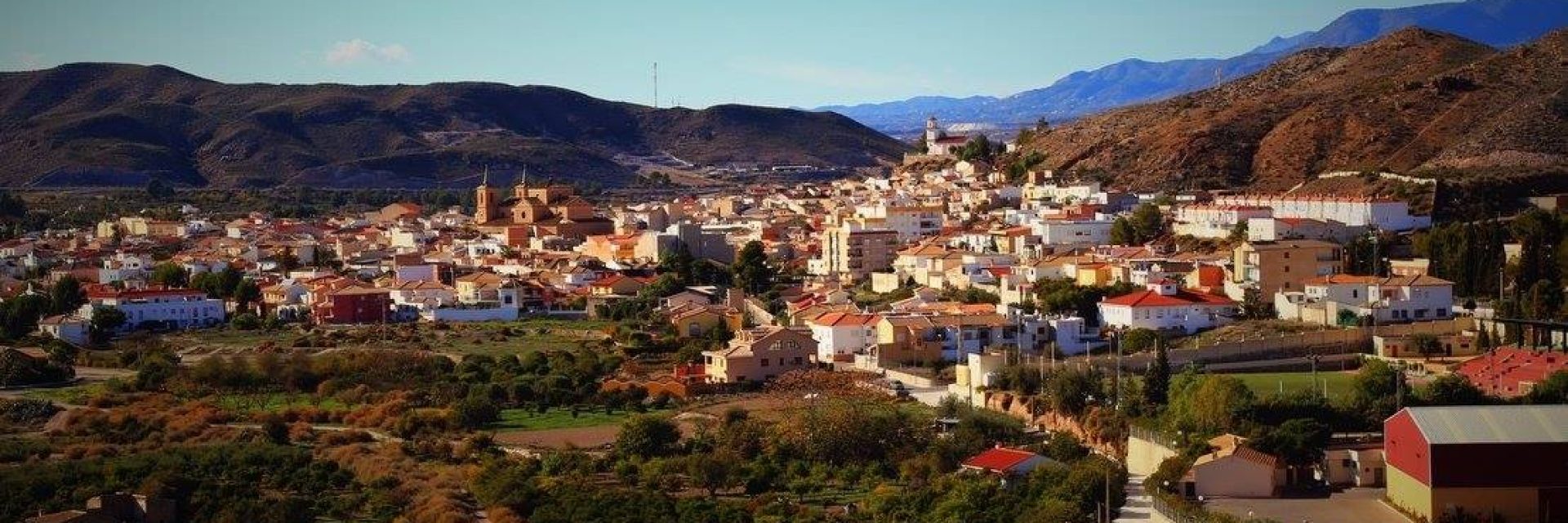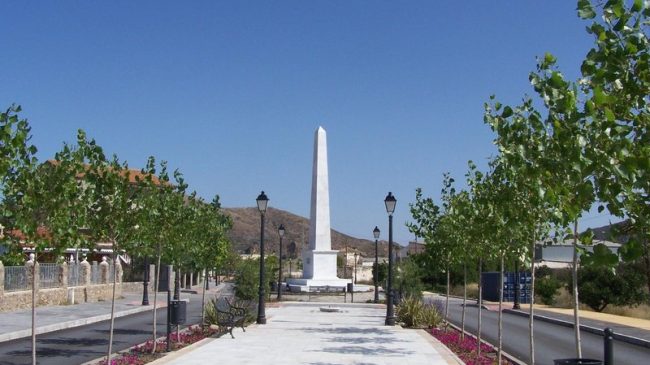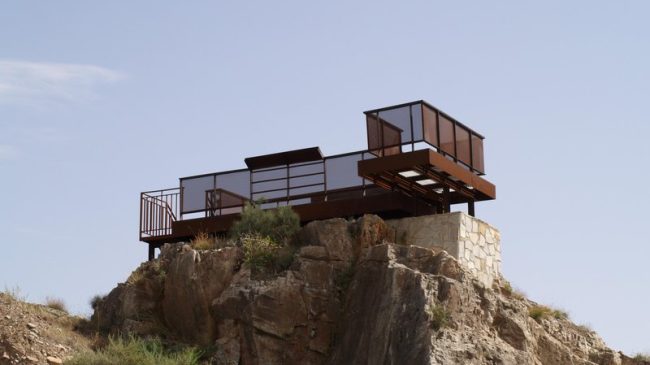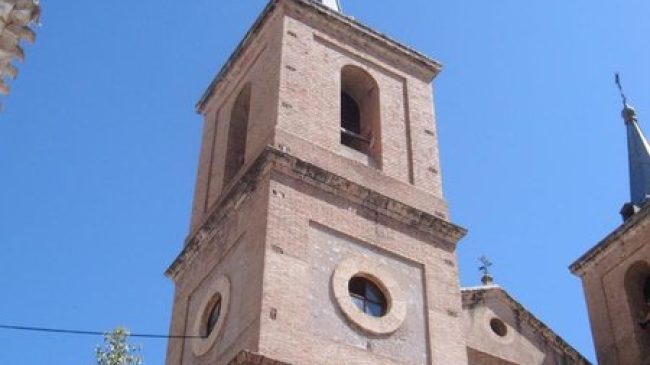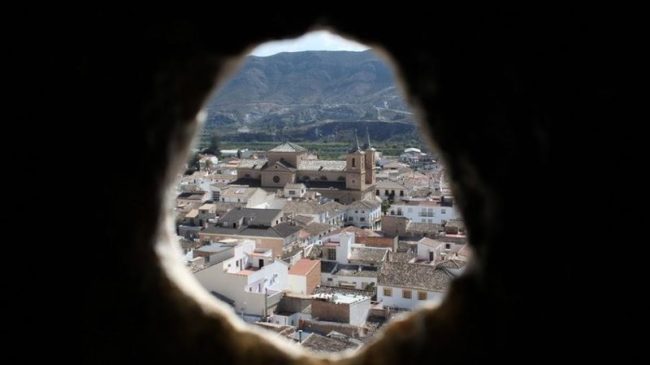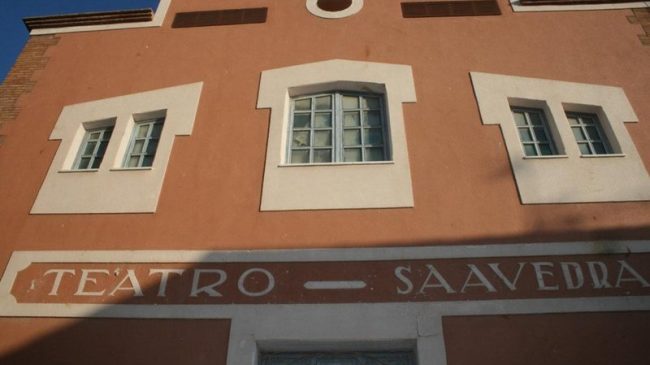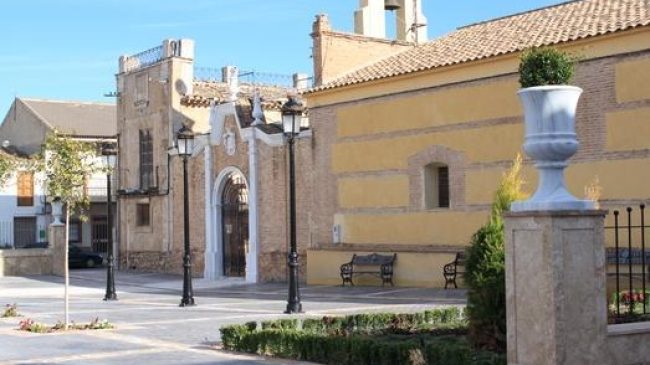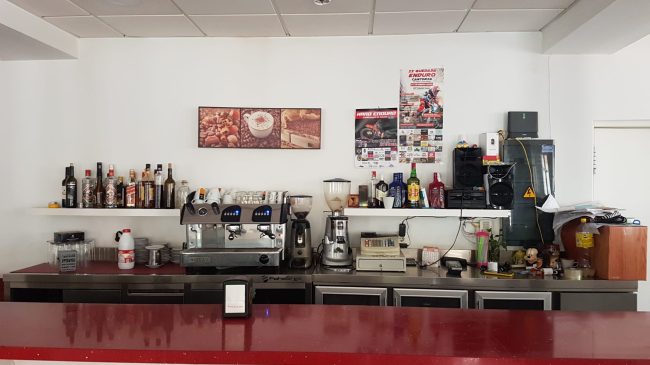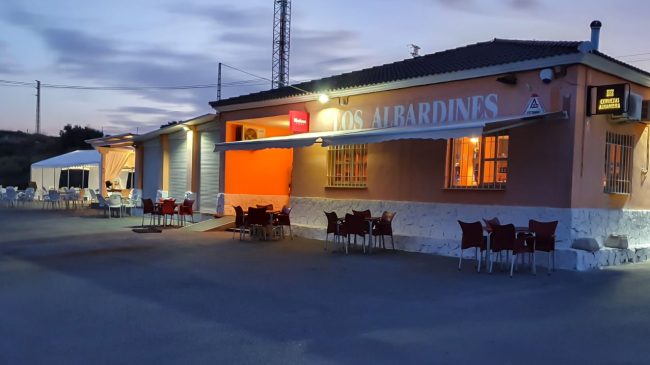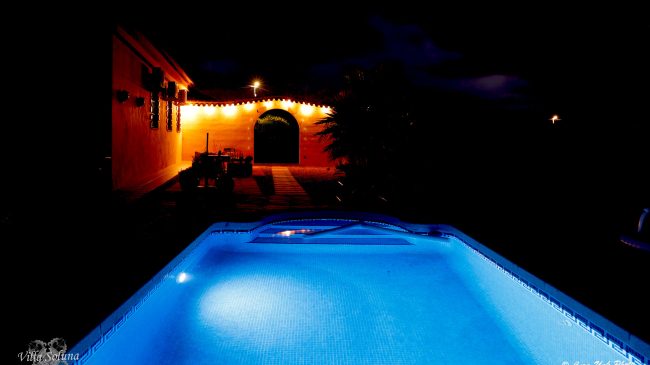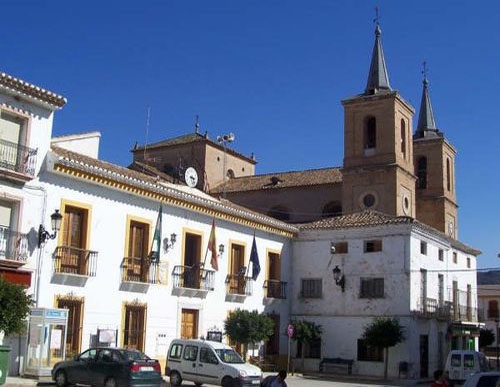DESCRIPTION
Municipality belonging to the region of Valle del Almanzora, in the area of marble, as this is the main economic resource of the town, especially the transformation of the stone, as well as a rich fertile plain.
The town is located on the banks of the Almanzora River and has a new layout, with a straight line, and straight streets and uniform houses, among which the Parochial Church stands out. In the hamlet of Almanzora is the Palace of the Marquis of Almanzora, beautiful example of the neoclassical.
Something that characterizes especially the Villa de Cantoria is the welcoming and hospitable character of its inhabitants. The bonanza of its climate during the great part of the year and its more ingrained customs make that the cantorianos are accustomed to live in the street, to share experiences and to open their doors to anyone who visits them. A clarifying fact of this hospitality is the large number of foreigners who have taken up their residence in the Villa and now feel part of it. In fact, it is not strange that these citizens participate actively in the different celebrations that are celebrated throughout the year, as well as in the daily life of the locality.
As Mayor of Cantoria, it is an honor for me to welcome all those who decide to discover the wonders of our people through this website.
Visiting Cantoria is an experience steeped in centuries of history. Its uniqueness constitutes a surprising mixture able to offer the visitor multiple tourist possibilities thanks to its important historical-religious legacy.
I would like this website to encourage everyone to enjoy and get to know our people, wishing them a pleasant stay that will surely make them repeat.
DISCOVER CANTORIA
HISTORY
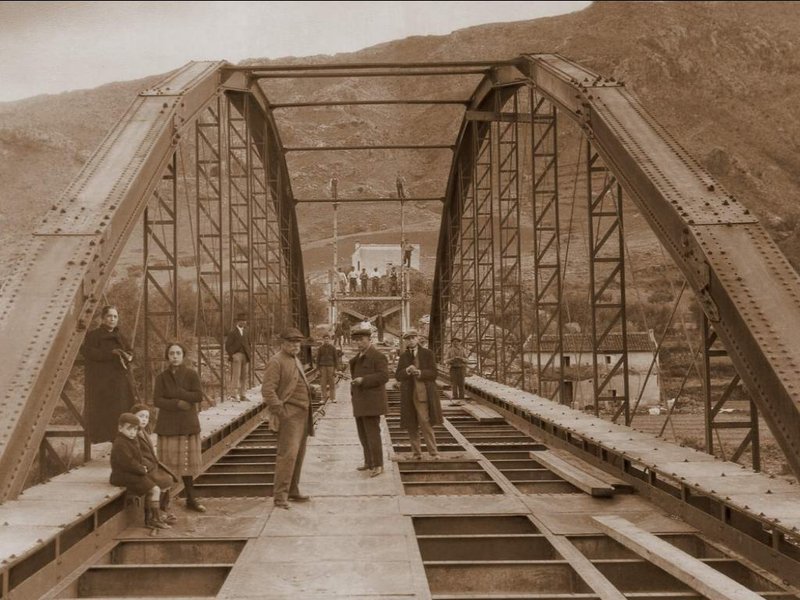 Photo bridge under constructionThe hallmarks of Cantoria rest on centuries and centuries of history. Not in vain, knowing it today means discovering, at the same time, the infinity of civilizations, peoples and cultures that have been passing through it over the years. And it is that its privileged geographic situation, border with the Kingdom of Murcia and Andalusia, soon turned it into a strategic zone for the settlement and protection of many towns.
Photo bridge under constructionThe hallmarks of Cantoria rest on centuries and centuries of history. Not in vain, knowing it today means discovering, at the same time, the infinity of civilizations, peoples and cultures that have been passing through it over the years. And it is that its privileged geographic situation, border with the Kingdom of Murcia and Andalusia, soon turned it into a strategic zone for the settlement and protection of many towns.
The origin of Cantoria goes back to prehistory, judging by the numerous archaeological remains found in its contours. These preserve the trace of the first settlers back in the Neolithic and, later, the imprint of Phoenicians and Greeks. As early as the 12th century, Cantoria was a primitive Andalusian Arab population that, with the Conquest of Granada in 1488, became a Christian and received the title of Villa from the hand of the Catholic Monarchs.
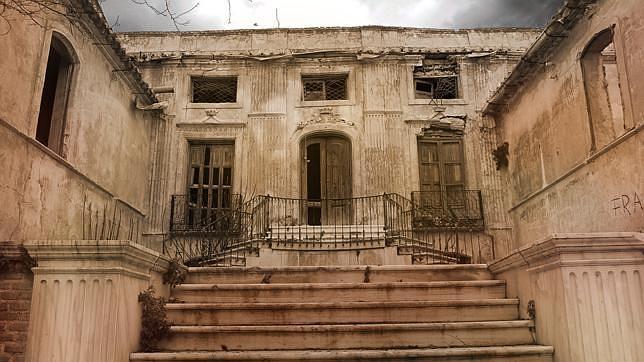 Photo Palacia Alamanzora Cantoria In 1515, his name was linked to the Marquesado de los Vélez when Don Pedro Fajardo acquired it together with Partaloa for two and a half million maravedis. Another important chapter of its history was the Moorish uprising (1569-1571) because, according to historians, Cantoria was one of the key scenarios of the contest that faced two proper names: Jerónimo el Maleh and Don Juan de Austria, who chose Cantoria to install your campaign camp.
Photo Palacia Alamanzora Cantoria In 1515, his name was linked to the Marquesado de los Vélez when Don Pedro Fajardo acquired it together with Partaloa for two and a half million maravedis. Another important chapter of its history was the Moorish uprising (1569-1571) because, according to historians, Cantoria was one of the key scenarios of the contest that faced two proper names: Jerónimo el Maleh and Don Juan de Austria, who chose Cantoria to install your campaign camp.
Finally, the current settlement of the Villa was made between 1570 and 1573, although it was not until November 30, 1833, that Cantoria was constituted as an Almeria municipality when the province of Almería was created again by Don Francisco Javier de Burgos.
GASTRONOMY
The crumbs
The star dish of the cantorian recipe book, beyond the rainy days that marks the tradition, is still migas, a typical food of the province of Almeria that in the town has its own recipe. Among its ingredients we find wheat or corn flour (or both mixed), water, oil and salt.
Something very traditional in Cantoria is to accompany the crumbs with fish broth, paprika (broth made with red and green peppers roasted), fried peppers and dried tomatoes, “tajás” (pieces of rib and lean fried), pieces of fried black pudding, peppers fried dry, tomatoes, roasted tender garlic, radishes, etc.
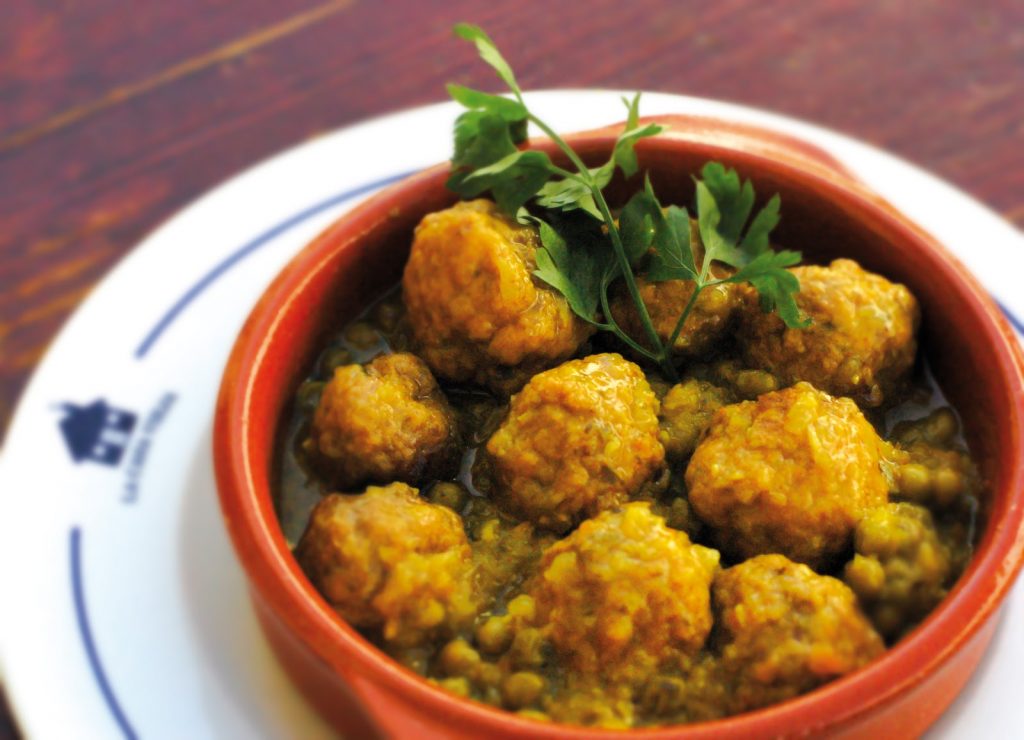 There is also a variant of crumbs in the popular cookbook, which are the porridge. In this variety, the flour is baked by turning it round with a wooden spoon, which makes it look like a thick dough. Once cooked, bathe with paprika or fish broth. We also find sweet porridge that is cooked with milk.
There is also a variant of crumbs in the popular cookbook, which are the porridge. In this variety, the flour is baked by turning it round with a wooden spoon, which makes it look like a thick dough. Once cooked, bathe with paprika or fish broth. We also find sweet porridge that is cooked with milk.
The pots also have a long tradition in Cantorian cuisine, so we can find a wide variety. One of them is the balls. It is a slow cooked stew with beans, fennel and blood sausage which is added a kind of meatballs, hence the name, made of cornmeal, chorizo, bacon and parsley. Another puchero is the wheat, food that has the same ingredients as the balls but to which pre-crushed wheat is added, instead of the balls. We also find the pumpkin, cabbage or rice stew.
The gurullos and the noodles are other foods that enjoy great fame in the Villa. Both stews are cooked with a sofrito made with partridge or rabbit, to which potatoes are added and in the case of the first, gurullos (small pieces of flour dough) or noodles, eb the case of the second.
And when the heat tightens, gazpacho also has its Cantorian version and consists of a very fine chopped cucumber, tomato and onion (not crushed) to which is added very cold water, oil, vinegar, and salt. Garnish with garlic and bread soups are added.
Finally, we must mention the fritá de sangre, a dish made with onion and tomato fried with cooked pork blood.
The traditional pork slaughter is still celebrated today and from it comes a rich variety of homemade sausages such as black pudding, chorizo and blanquillo.
 Cantorian sweets
Cantorian sweets
An important chapter of the gastronomy of the Villa is occupied by sweets since Cantoria is rich in traditional pastries, the same that is tasted during the different festivities of the town or the one that cheers the tables of Christmas or Holy Week.
Among the most typical sweets we can find the almendrados (a kind of two sponge cake half-moons stuffed with angel hair and battered with a thin layer of ground almonds), the orange donuts, the almond sighs, the honey shortbread, the roscos de vino y aguardiente, the alfajores de almendra, the stuffed empanadillas and the roscos de anís.
FESTIVITIES
 The Wheelbarrows (January 16 in honor of San Antón)
The Wheelbarrows (January 16 in honor of San Antón)
Being San Antonio Abad (patron of animals and fire) one of the two patrons who reveres the Villa, Cantoria belongs to that privileged group of places where Christmas lasts until well into the month of January as the popular saying goes “Until San Antón Pascuas are”. It is traditional to celebrate their name day on January 17, blessing the animals, but the cantorians, perhaps because of their Muslim past, chose fire and gunpowder to celebrate it.
This is how, from time immemorial, Cantoria venerates San Antón with Las Carretillas, one of the most deeply rooted festivities in the town, which takes place on the eve of San Antón’s Day, that is, on January 16. To be more precise, Las Carretillas is a kind of cardboard cannons (formerly made of cane) that are filled with a powder and iron filing compound that, when turned on, must fulfill three basic premises: not to explode, not to rise, but to move zigzagging to ground floor. That is the show that provides a good wheelbarrow.
A few decades ago, the wheelbarrows were brought from the Suflí locality, but another of the traditions of this party was forged, which is to make them in a traditional way by the peñas de carretilleros.
The result of this work, which takes months, is shown during the Night of the Tests, the evening that precedes the big night of Las Carretillas and where the Best Operator of the Year is chosen.
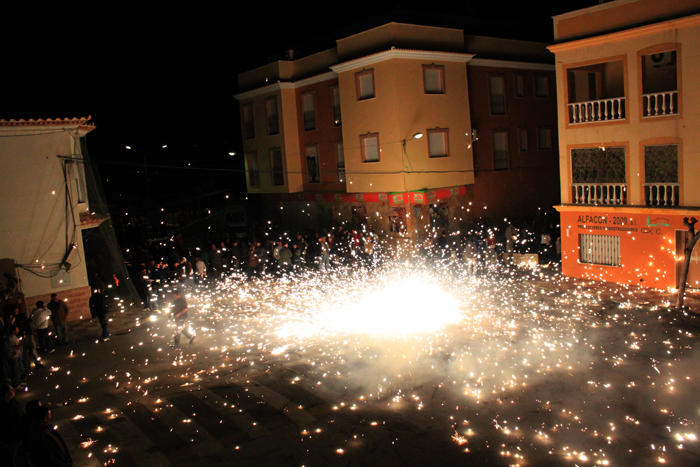
Come the big day, the eve of San Antón, and finishing the neighbors the assembly of the metallic fabrics that will protect the facades of their houses, the party of Las Carretillas starts with a mass and the famous Procession of the Carretillero, in which San Antón, accompanied by his inseparable San Cayetano, he is paraded and “danced” by the drivers to the cry of “Vivan los Santos”. During this tour, the drivers are already dressed as operators, that is, covered with thick clothes, high boots and helmets to protect themselves from a long night that they will spend pulling carts (the first ones are always for the Saints) and visiting the houses of their neighbors loaded with their talines (wooden box where the carts are stored).
It is traditional to build bonfires in the streets and in the houses to serve the hired traders of the land watered with a good wine of the country. The next day, San Antón Day, is a festive day in Cantoria and is celebrated with a Mass and the Procession of the Patron Saint. Different cultural activities are also celebrated in the municipal booth.
ORGANISE YOUR TRIP
WHAT TO SEE
What to do in Cantoria?
If you are thinking of taking a different trip to discover beautiful places and charming towns that are not usually well known, a getaway to Cantoria is an excellent option. Our town has many options to make and we recommend the ones that are sure to be of your interest.
WHERE TO EAT
WHERE TO SLEEP
DATA
City Council of Cantoria
Address: Plaza de la Constitución, 1, 04850 Cantoria, Almería
Web: http://www.cantoria.es/
Contact: 950 43 60 00

